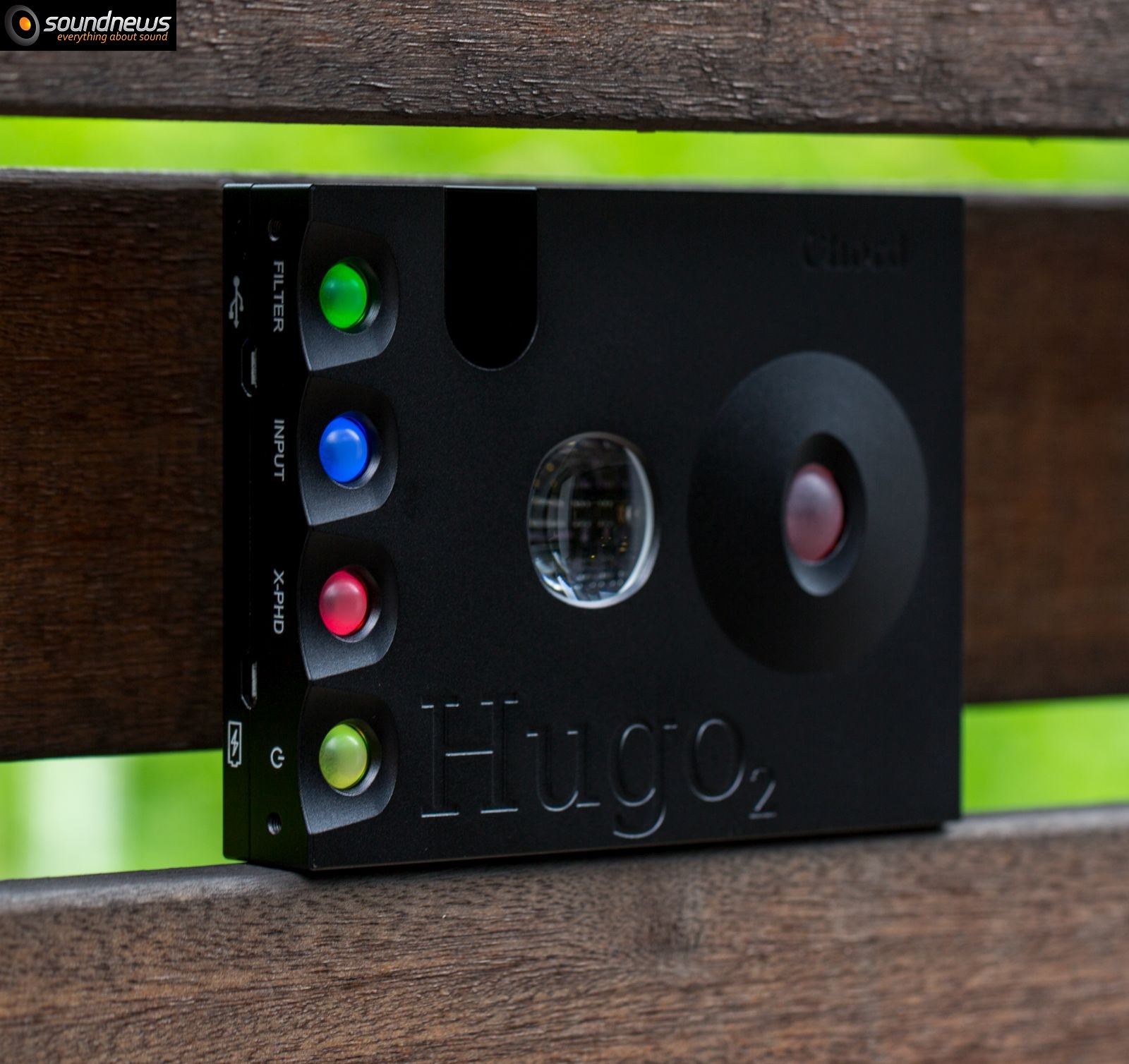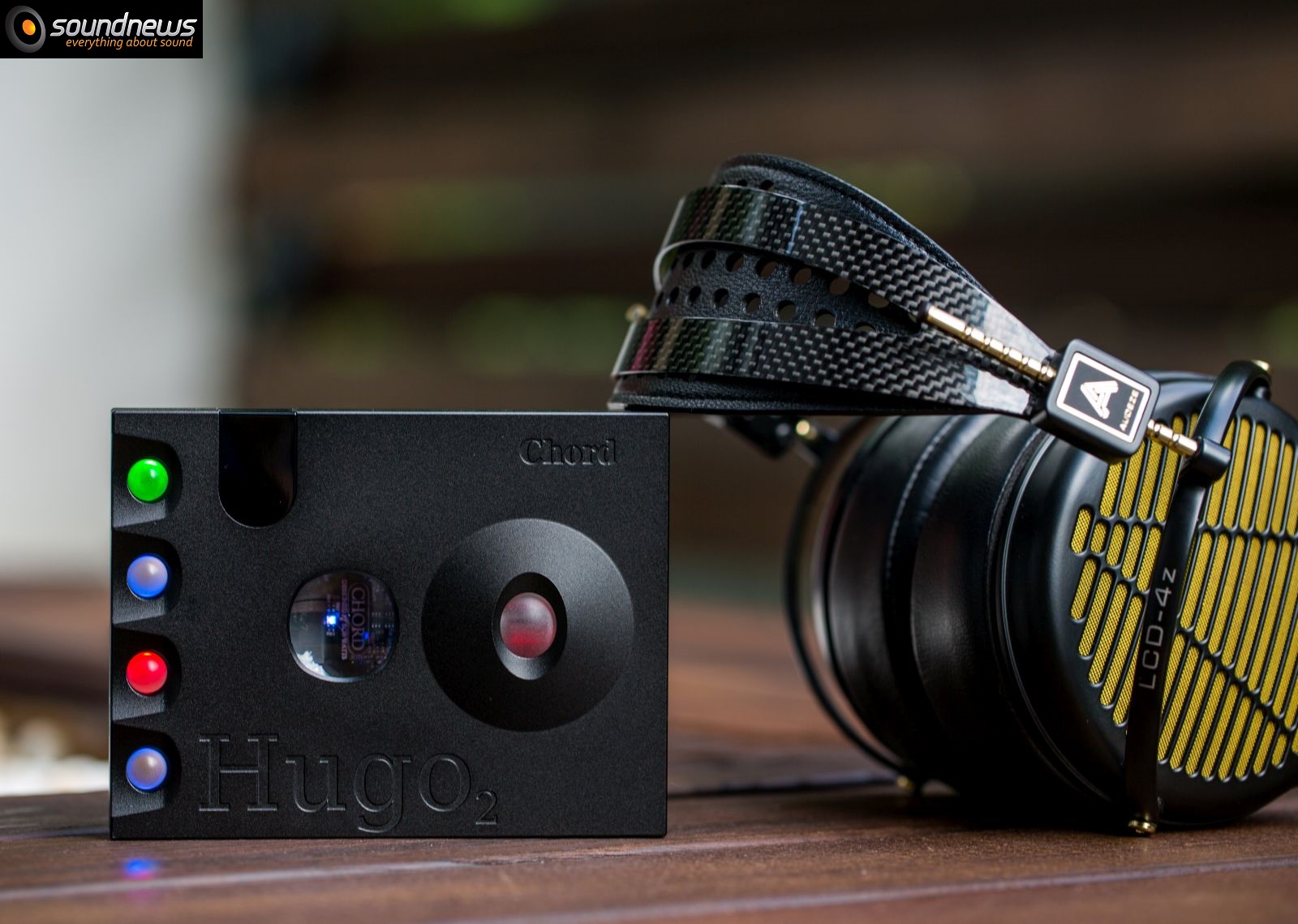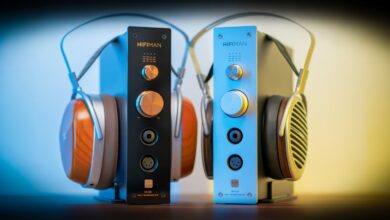
Hello, my name’s Hugo, I like rainbows and I’m an audioholic!
Hello Hugo, I’m Sandu, I love bock beers and I’m also an a̶l̶c̶o̶ho̶l̶i̶c̶ audioholic!
Four years ago, Rob Watts revolutionized the DAC market by introducing the cute little Chord Hugo – a high performance DAC and headphone amplifier.
Until that time it was inconceivable that a palm sized DAC would dethrone big and heavy DACs literally and figuratively. Like most of us, we were impressed by the performance of the little Hugo, about which I wrote extensively a detailed review right here.
Over the years, slowly but surely Watts improved his own designs by introducing recently his successor named simply Hugo2.
Compared to the first generation, Hugo 2 comes with many significant changes, but mostly are related to performance, aesthetic changes are relatively small.

Design & Build Quality
Like the first generation Hugo, newest one is created entirely from an aluminum block having a useful brick form (easy to use as a self defense weapon, props to Chord for that!)
They didn’t give up on the wall-projected rainbow seen late in the evening, but I was very glad to find the “DIM” button on the remote, thank you Rob, my prayers were heard!
When playing a song, each color of the silicone spheres actually indicates important parameters such as: bitrate, if it’s a PCM or DSD file, if a digital filter is active, if the crossfeed is on, even the volume wheel changes color after increasing or decreasing the volume.
Under the hood
The first-generation Hugo used a 26.000 tap processing power due to the Xilinx Spartan 6 FPGA programmed by Chord Electronics engineers. The new Hugo2 raises the bar up to 49.152 taps by using the latest Xilinx Artix 7 FPGA chipset.
At this moment from all Chord Electronics portfolio only the high-end DAC called Dave at a price of 10.750 EUR offers a higher processing power of 164.000 taps.
Headphone amplification was also improved, it is up to 1050mW in 8 Ohms compared to 720mW of the first gen. Harmonic distortions lowered as well and as a result SNR increased from 120 dB to 126 dB. This time around line-out and the headphone amp are powered by a discrete output stage that always works in Class A and it is capable of 5V RMS of power.
This little fella plays natively PCM up to 32 bit/768kHz as well as DSD512 (DSD x8) on the USB input.

Hugo2 has 4 digital inputs: microUSB, coaxial (up to 32bit / 384kHz), optical (up to 24bit / 192kHz) and Bluetooth via Apt-X (up to 16bit / 48kHz) and three analog outputs: a 3.5 mm (1/8’) headphone output, a 6.35 mm (1/4”) headphone out and a RCA line output.
Internal Li-Po batteries have a capacity of 2600 mAh that offer an autonomy of about 7 hours at medium volume.
There are a lot of accessories in the box such as: a microUSB cable, a microUSB to microUSB OTG cable to connect it to a smartphone, a charger, an optical cable, a coaxial cable and a simple yet intelligent remote.
In addition to the native and direct playback of PCM and DSD files, the manufacturer also offers 4 digital filters: the “ultimate reference,” for that pure and unaltered signal, “High frequency roll-off” to cut some treble off of the top, “Warm” to bring a pleasant tone to the music, “Warmer HF roll-off” – a combination of the last two filters for even a warmer sound. In all of our tests we used the first filter.
If you want to use headphones with your Hugo2, four crossfeed digital filters are provided to mimic the sound of the speakers and reduce the listening fatigue. I really enjoyed the last two crossfeed settings on older recordings that were mastered exclusively for loudspeaker listening. Examples of such records are many: Elvis Presley, The Beatles, The Doors, Black Sabbath, Led Zeppelin, Deep Purple, and the list continues.
Let’s get to the most interesting part, shall we?

Audio Performance
First, I integrated Hugo2 in a stereo system consisting of a Matrix X-Sabre Pro DAC, a Cambridge Audio Azur 851A integrated amplifier and the Audio Physic Tempo Plus loudspeakers. Later on, I compared the little Hugo2 with X-Sabre Pro DAC.
The first impression is that I am dealing with an extremely fast sound that has a strong kick to the chest and with an excellent precision. I immediately remembered the performance of the first gen Hugo – that livelier sound that excites fast transients and keeps up with dynamic rises. Hugo2 still has an impressive fluidity that somehow binds the notes in a natural and pleasant way.
If Hugo2 is your first foray into audio gear from this British manufacturer, for me the new toy syndrome was very obvious and in the first days I felt like in a second honeymoon. But after days of comparisons with other top tier DACs or headphone amplifiers, in time it did not look quite so rosy.
Listening to Rodrigo y Gabriela – Hanuman, Hugo2 was by far the most impressive DAC, the energetic tempo and the fast hitting kicks into eardrums are its strengths. On the other hand, the sound became flatter and the soundstage less deep, the bass decayed faster than I would have wanted. Retrieval of the notes is too fast, and although the drums had an impressive kick, it dissipated too quickly, sounding artificially somehow.

By comparison, X-Sabre Pro has a more present sub-bass, played on several layers that had a wider and deeper soundstage.
On Hugo2 on this track I felt an extraordinary leading edge of notes, while one X-Sabre Pro notes texture came out more obvious, having a slightly heavier weight to it.
After I played that Nils Lofgren song, Hugo2 impressed me with a great accuracy and airy presentation but again, the bottlenecked soundstage let down an almost impeccable performance.
The extraction of the details is at a very high level and indeed every micro-detail retrieval seems like a child’s play for Hugo2 portraying music with astonishing accuracy

Unfortunately, a high accuracy and a strong emphasis put on the leading edges and less on the natural texture makes the performance a bit more artificial. The sudden stop of guitars vibrations and drums diminishes a lot of the magic I knew.
The sound generally gives the feeling of stir, speed and precision, is not part of the calming and relaxing audio sources, it is certainly part of the opposite camp.
Listening to Dave Brubeck’s quartet – Take Five was again a revealing performance. Hugo2 has always shown that it is capable of surgical precision, emphasizing the little details that will make a difference in the long run.
From this point of view X-Sabre Pro did not have the same explosive and hard rock dynamics, but the latter sounded wider and deeper, giving a touch of naturalness that I did not hear on the Hugo2.

Overall Hugo2 doesn’t sound artificial or dry, I would rather categorize it as a very sincere and linear audio source. Hugo2 is not forgiving at all and will highlight any imperfections in your music.
Of curiosity I tried some of Led Zeppelin and The Doors…bad mastering, old recording equipment said their word and put a stain on the grainy performance, it was not a very enjoyable listen. On poor quality material it sounds unimpressive, focusing precisely on the flaws of the tracks.
A few days later, I decided to use it in my headphone-based system, I compared it with the X-Sabre Pro + HeadAmp Gilmore Lite MK2, with Burson Play (Basic version) and a little bit with a FiiO Q5. The headphones used were: Audeze LCD-4Z, LCD-4, Sennheiser HD660S and FiiO FH5 hybrid IEMs.
Well, how should I put it…The sun appeared in the sky and a stupid smile on my face.
From my point of view only in the DAC + Headphone amp combo Hugo2 really shines!
I stayed numb on any song and on any musical styles, possibly the headphone amp that always works in Class A brought a touch of naturalness and expanded the previously small soundstage heard on the RCA line out.
In DAC/Amp mode, it easily outmatched the Burson Play, FiiO Q5, and exchanges low kicks with X-Sabre Pro hooked to Gilmore Lite Mk2.

I will mention that the internal headphone amp is very capable, it drove all the test headphones except for the Audeze LCD-4 that we already know need a monster amplifier to be properly driven, I did not find that surprising.
Instead, Audeze LCD-4Z and Sennheiser HD660S sounded full of life with a big power reserve and impressive headroom.
If I was listening to good-mastered tracks a smile would immediately appear on my face, If I was listening to grainy old recordings an F word would immediately come out of my mouth… Hugo2 is also unforgiving on headphones and will make you rethink about that mp3 collection you still have from the Napster days (please shift+delete that!)

The same could be said on modern music, it sounded again extremely lively and dynamic, having quite a kick into eardrums, LCD-4Z is extra special with this type of music.
At about the end of the marathon with headphones on for few hours I felt something I felt only on Sennheiser HE-1: a powerful ringing in both ears. Due to the very low level of harmonic distortions, I involuntarily raised up the volume to a critical level I do not normally listen to. In terms of distortions Hugo2 is very good and will be hard to match, virtually lacking any of it could damage your hearing, so watch out those decibels!
Out of curiosity I connected it to a FiiO M7 DAP via a OTG cable and later on to a smartphone using the same cable, I launched the Tidal streaming app and was blow away by the performance, it is by far the best portable source out there. Though I listened to a ton of DAPs and DACs, none of them came close to Hugo’s performance. Smiling like a madman and walking down to work I realized that I definitely hold the most capable portable DAC/Amp and probably many years after I will stay the same thing. Hugo2 is far ahead of any portable player on the market, regardless of brand or price.

Conclusions
Hugo2 has impressed me dearly in a desktop system where headphone listening is number one priority. It can easily overtake bigger systems made up of several components and which can be more expensive.
It will drive any dynamic headphones and most planar-magnetic ones, it doesn’t have traces of his or hum with sensitive IEMs, so I really liked it with any headphones I have thrown at it.
In a stereo system some things bothered me like the cramped and XS sized soundstage, the sudden stop of cymbals (more like a drop in that particular frequency range) and the mild dryness of the sound. You should know that all these drawbacks I’ve been looking for with a magnifying glass, on a more relaxed listening I might not notice them, because the rest of its acoustic properties are excellent.
PROS:
- Top level detail and transparency
- Speed and impact at the highest level
- Linear frequency response, without dips or rises
- Powerful headphone amp section
- Inclusion of a crossfeed and of digital filters
CONS:
- Less impressive on loudspeakers because of the limited soundstage
- Some sounds (cymbals, bells, drums) are sounding artificial
ASSOCIATED EQUIPMENT:
-
DACs: Chord Hugo2, Matrix X-Sabre Pro + X-SPDIF2, FiiO Q5
-
Headphone amps: Headamp Gilmore Lite MK2, Burson Play
-
Integrated amplifier: Cambridge Audio Azur 851A
-
Loudspeakers: Audio Physic Tempo Plus, KEF LS50W
-
Headphones: Audeze LCD-4, LCD-4Z, Sennheiser HD660S, FiiO FH5







